People of the Parks Profiles
In addition to Pammel and his colleagues at ISU, many others joined in the efforts to establish the park system. Some of the park names reflect these efforts and other people who have played a role in Iowa’s history.
William Beed
William Beed emigrated from England to the United States in the 1850s. Two miles north of Hampton, Iowa, Beed bought a grist mill and built a dike and pond on the site. There, he operated Franklin Roller Mills for forty years. 1
Affiliated park: Beeds Lake State Park.
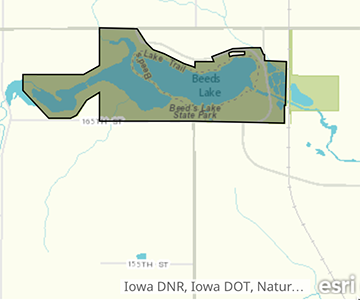

Black Hawk2
Black Hawk was a warrior and leader of the Sauk nation. In the early 1800s, the United States initiated treaties with the Sauk and Meskwaki in a successful effort to take native lands and give them to white immigrants. Black Hawk led a group of Sauk that thought the treaty of 1804 was misleading and refused to comply. This resulted in forced removal of his people which in turn led to the defensive war that bears his name.After the Black Hawk War (1832), the United States government merged the Meskwaki and the Sauks into the Sac & Fox Confederacy and declared Keokuk the “Chief” of the Sauks. 3
Affiliated park: Black Hawk State Park.
Ambrose A Call4
Ambrose A. Call was the founder of the Algona Pioneer Press and a U.S. Mail route contractor. 5
Affiliated park: Ambrose A Call State Park.
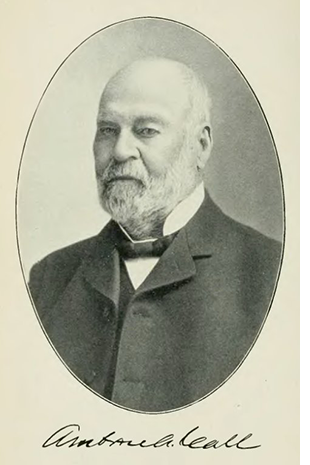

Anita Cowles
Anita Cowles Rearden was an engraver from San Francisco and the niece of the person who named the town of Anita, Iowa. She created wood engravings for a book on the poetry of Sappho that her husband, Judge Timothy Rearden, had been working on when he died. The engravings were eventually published in the Arion Press edition of Poetry of Sappho, translated by John Daley and Page DuBois. 6
Affiliated park: Lake Anita State Park.
Jay "Ding" Darling7
Jay Norwood “Ding” Darling was a noted cartoonist and conservationist. He was the first Chairman of the Iowa Fish and Game Commission and also donated $9000 of his personal funds to help found the Cooperative Wildlife Research Center at ISU to address the growing need for trained specialists to conduct wildlife management, research, and education. This was the nation’s first Cooperative Wildlife Research Unit. At the time, Darling’s investment was equivalent to the purchase price of a 100 acre farm. 8
Affiliated park: Lake Darling State Park.
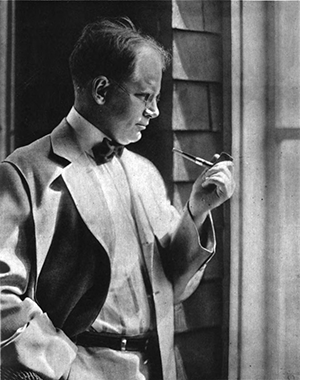
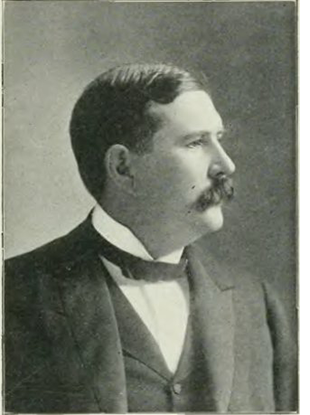
Jonathan Dolliver9
Jonathan Prentiss Dolliver was a Republican United States Congressional Representative and Senator. Prior to his time in congress, he worked as the City Solictor for Fort Dodge, Iowa. He served the U.S. Congress from 1889-1900 and the U.S. Senate from 1900-1910. 10
Affiliated park: Dolliver Memorial State Park.
Perry Holdoegel11
Perry Holdoegel (1869-1940) was a Republican state senator from Calhoun County who chaired the Senate Committee on Fish and Game. Holdoegel sponsored Iowa's first state parks bill. Known at the time as the Holdoegel Park Act, the bill was submitted to the 27thGeneral Assembly, and authorized the creation of a State Board of Conservation with power to acquire land for the purpose of creating state parks. 12
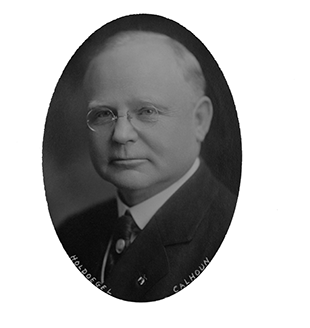
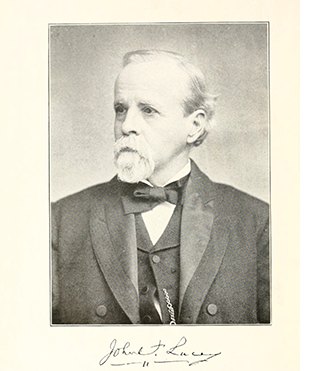
John F Lacey13
Major John F. Lacey was a Civil War veteran, a Republican congressional Representative, and conservationist. He sponsored the Lacey Act of 1900, which became the nation’s first federal wildlife protection law. The Lacey Act prohibits trade and acquisition of wildlife, fish, or plants that were illegally obtained. After his death, he was honored with a special memorial album by the Iowa Conservation Association. 14
Affiliated park: Lacey Keosauqua State Park.
Merriweather Lewis and William Clark15
Lewis and Clark were well-known explorers who led a federally-sponsored expedition to explore the Northwest after the Louisiana Purchase. They journeyed from St. Louis, Missouri to Fort Clatsop, Oregon and back again. They traveled through Iowa in 1804, stopping in Council Bluffs, Onawa, and Sioux City. 16
Affiliated park: Lewis and Clark State Park.
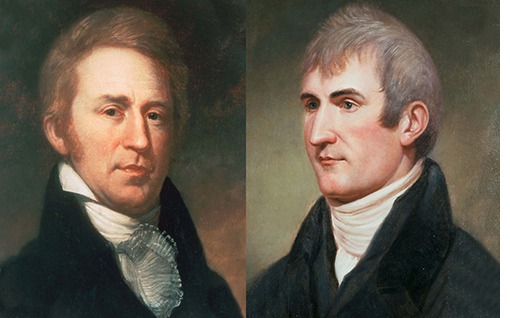

Thomas Hudson MacBride17
Thomas Macbride was a botanist and the tenth president of the University of Iowa. He also served as the first President of the Iowa Park and Forestry Association. In the mid and late 1890s he was an active proponent of establishing a statewide system of rural parks. His 1895 address to the Iowa Academy of Science is considered one of the hallmarks of the beginning of the conservation movement in Iowa. 18
Affiliated park: Lake Macbride State Park.
Rose and G. B. McIntosh
Rose and Gilbert Blodget McIntosh were married on February 4th, 1876. The couple lived in Clear Lake. Gilbert had large farming interests, and Rose was involved in many civic improvement activities and societies, including the Iowa Federation of Women's Clubs.19
Affiliated park: McIntosh Woods State Park.
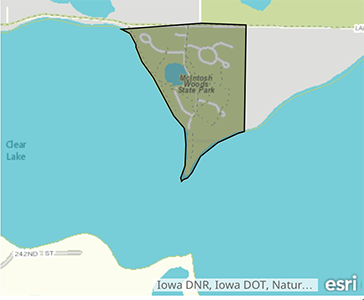
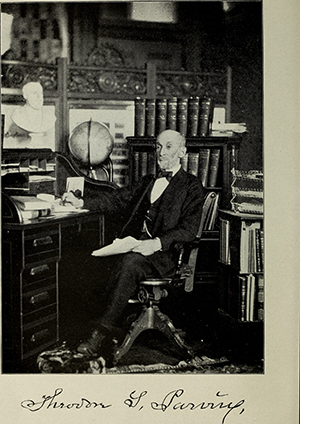
Theodore Parvin20
Theodore S. Parvin (1817 –1901) was the private secretary to the first Iowa territorial governor and Iowa’s first Territorial Librarian. He was an early promoter of setting aside Iowa woodlands for economic and recreational use. He also advocated for creating a park in Des Moines near the state capitol where trees native to Iowa could be planted. 21
Zabulon Pike22
Zebulon Pike was a Brigadier General and explorer. He visited Iowa as part of his first expedition (1805) in which he was tasked with finding the source of the Mississippi River and scouting sites for military posts. After the success of his first expedition, he was sent on what became known as the “Pike Exhibition” (1806 –1807) in which he explored the area covered by the Louisiana Purchase.
Affiliated parks: Pikes Peak State Park and Pikes Point State Park.
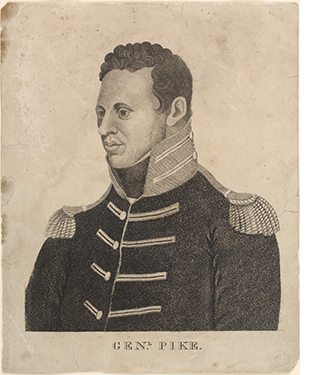

Bohumil Shimek23
Bohumil Shimek was a botanist, conservationist, professor, and Curator of the Herbarium at the University of Iowa. He helped establish the State Parks system, including through his service as a charter member of the Iowa Park and Forestry Association (eventually known as the Iowa Conservation Association) and in his work with the Iowa State Geological Survey. Shimek served on the Iowa Conservation Association's special legislative committee which eventually helped draft the 1917 state parks bill. 24
Shimek State Forest, the largest contiguous stand of state owned forest in Iowa, is named for him.
Wapello25
Wapello was a controversial Meskwaki leader known for his involvement with treaties with the United States and control of the resulting annuities. At the end of his life, he spoke out against further land cessation and removal of the Meskwaki people.26
Affiliated park: Lake Wapello State Park.

Waubonsie27
Waubonsie was a Potawatomi chief who dealt militarily and diplomatically with threats to his people's land and safety during the 18thand 19thcenturies. In the 1830s Waubonsie and other Potawatomi moved to what is now southwest Iowa, in the area of Mills and Fremont counties. 28 Image Credit: Smithsonian American Art Museum http://collections.si.edu/search/results.htm?q=record_ID:saam_1985.66.153_289
Affiliated park: Waubonsie State Park
J. George Wyth
J. George Wyth was a Cedar Falls businessman and conservationist. Wyth joined with three others to start the Viking Pump Company in 1911. Serving as its first president and also as its general manager, he retired from the company in 1944. Wyth was instrumental in establishing the Cedar Falls park system, and was a charter member of the Cedar Falls Park Board in 1919. 29
Affiliated park: George Wyth State Park.
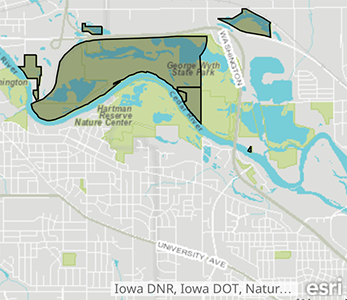
About this exhibit
Iowa State Parks Digital Collection
State Parks Sitemap
Iowa State Parks Infographic
- 1. Buehner, Kristin, and Peggy Senzarino. “Faces behind the Places,” Mason City Globe Gazette, August 27, 2006, online edition. http://globegazette.com/news/local/faces-behind-the-places/article_412c6876-cad3-5e58-8786-cdf177a6713c.html.
- 2. Photo credit: "Public Domain painting photographed by George Catlin, August 2008. CC-BY 2.0 https://commons.wikimedia.org/wiki/File%3ABlack_Hawk_(Sauk_chief).jpg)”
- 3. Nichols, Roger L. "Black Hawk, Makataimeshekiakiak, or Black Sparrow Hawk," The Biographical Dictionary of Iowa, University of Iowa Press, 2009. Accessed September 13, 2017, http://uipress.lib.uiowa.edu/bdi/DetailsPage.aspx?id=31
- 4. Photo credit: "Public Domain"
- 5. Call, Ambrose A. "Indians Repelled in Kossuth," The Annals of Iowa 31 (1951): 80-90. Accessed September 19, 2017, http://ir.uiowa.edu/annals-of-iowa/vol31/iss2/6
- 6. Arion Press, “‘Poetry of Sappho’ with Prints by Julie Mehretu,” The Arion Press, accessed September 19, 2017, http://www.arionpress.com/catalog/093.htm.
- 7. Photo credit: "Public Domain"
- 8. Iowa Cooperative Fish and Wildlife Research Unit, “History: It Began at Iowa State College,” accessed August 29, 2017, https://www.cfwru.iastate.edu/history.
- 9. Photo credit: "Public Domain"
- 10. “Dolliver, Jonathan Prentiss, (1858-1910).” Biographical Directory of the United States Congress, 1774 - Present, Accessed July 14, 2017, http://bioguide.congress.gov/scripts/biodisplay.pl?index=D000404
- 11. Photo credit: "Public Domain"
- 12. Rebecca Conard, "Hot Kitchens in Places of Quiet Beauty: Iowa State Parks and the Transformation of Conservation Goals," The Annals of Iowa51 (1992), 441-479. Accessed September 19, 2017, http://ir.uiowa.edu/annals-of-iowa/vol51/iss5/2
- 13. Photo credit: "Public Domain"
- 14. Iowa Conservation Association and Louis Herman Pammel, Major John F. Lacey: Memorial Volume (Cedar Rapids, IA., The Torch Press, 1915), http://archive.org/details/majorjohnflaceym00iowa.
- 15. Photo credit: "Public Domain"
- 16. Travel Iowa, “Trace the Footsteps of Lewis & Clark,” Get Inspired, accessed September 19, 2017, http://www.traveliowa.com/aspx/getinspireddetail.aspx?lflid=60.
- 17. Photo credit: "Public Domain"
- 18. University of Iowa Libraries, Papers of Thomas H. Macbride, Finding Aids, accessed September 19, 2017, http://www.lib.uiowa.edu/scua/archives/guides/rg05/rg05.01.08.htm.
- 19. Reeves, Winona Evans. The Blue Book of Iowa Women: A History of Contemporary Women (Press of the Missouri Printing and Publishing Company, 1914), 156.
- 20. Photo credit: "Public Domain"
- 21. William L. Krueger, “Parvin, Theodore Sutton,” Biographical Dictionary of Iowa, University of Iowa Press, 2009. Accessed September 13, 2017, http://uipress.lib.uiowa.edu/bdi/DetailsPage.aspx?id=297.
- 22. Photo credit: "Public Domain"
- 23. Photo credit: "Public Domain"
- 24. Rebecca Conard, "Shimek, Bohumil,” Biographical Dictionary of Iowa. University of Iowa Press, 2009. Accessed September 13, 2017, http://uipress.lib.uiowa.edu/bdi/DetailsPage.aspx?id=297
- 25. Photo credit: "Public Domain"
- 26. Anderson, Douglas Firth. "Wapello" The Biographical Dictionary of Iowa, University of Iowa Press, 2009. Accessed September 19, 2017. https://web.archive.org/web/20160310044933/http:/uipress.lib.uiowa.edu/bdi/DetailsPage.aspx?id=394.
- 27. Photo credit: "Public Domain"
- 28. David Holmgren, "Waubonsie," The Biographical Dictionary of Iowa, University of Iowa Press, 2009. Accessed September 20, 2017. https://web.archive.org/web/20120426050905/http://uipress.lib.uiowa.edu/bdi/DetailsPage.aspx?id=396.
- 29. Rob Kinney, "J. George Wyth," Black Hawk County Past and Present. University of Northern Iowa Department of History, accessed September 20, 2017, https://historyofblackhawkcounty.uni.edu/default.htm
